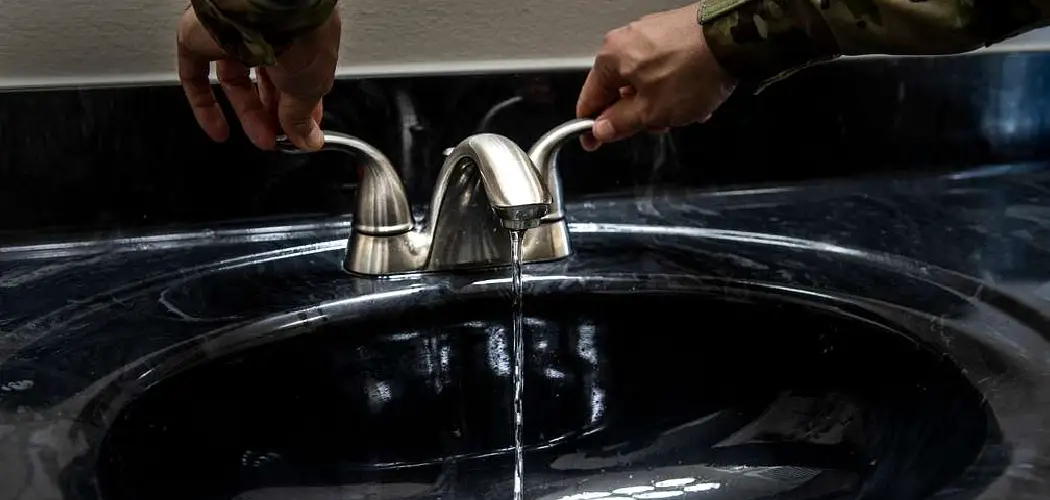Black water coming out of a faucet can be alarming for any homeowner, as it raises serious concerns about the integrity of the water supply. This article aims to shed light on the potential causes of this issue, which may range from contamination and pipe corrosion to sediment buildup.
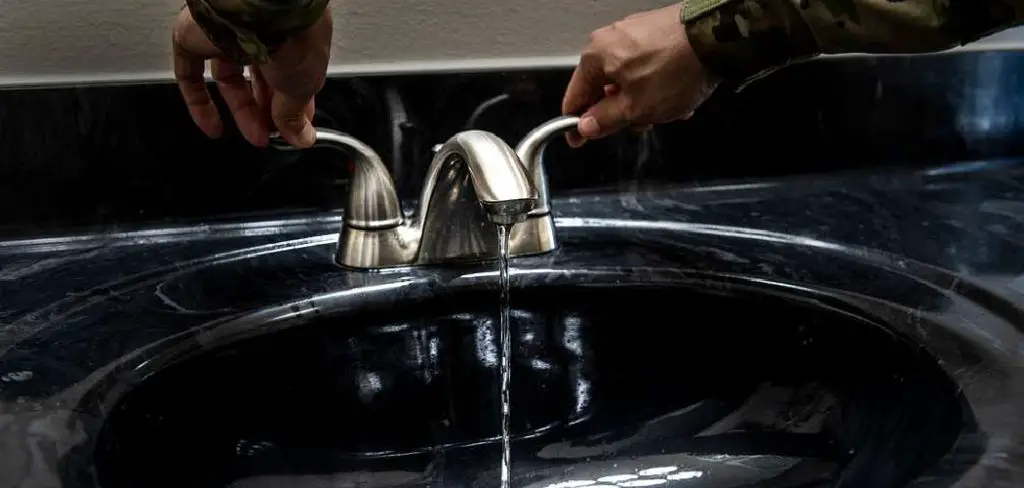
Understanding these causes is crucial, as black water poses health risks, including exposure to harmful contaminants, and can lead to significant damage within plumbing systems. We will provide a comprehensive guide on how to fix black water coming out of faucet, detailing diagnostic steps such as inspecting the water source and checking plumbing components.
By following the outlined procedures, homeowners can address the problem effectively and implement long-term solutions to safeguard their water quality.
Common Causes of Black Water
Sediment Buildup in Pipes
Sediment buildup is common in older plumbing systems, where materials like iron or manganese can accumulate over time. When the water flow is disrupted—such as after a period of non-use or following plumbing repairs—these sediments can be released into the water supply, resulting in a noticeable discoloration.
Homeowners may notice black or dark brown water, particularly after the faucet has been turned off for an extended period. This phenomenon can be especially prevalent in older homes with aging plumbing, where sediment accumulates more, leading to significant water quality concerns if left unaddressed.
Corroded Pipes
Another prevalent cause of black water is the corrosion of older pipes, particularly those made from galvanized steel. Over time, these pipes can degrade, releasing black particles into the water supply. Homeowners should watch for additional signs, such as low water pressure or a metallic taste in their water, indicating potential pipe deterioration.
If these symptoms accompany black water, it’s essential to investigate further, as corroded pipes can affect water quality and pose a risk of plumbing failure.
Rubber or Plastic Components Degrading
The degradation of rubber or plastic components within the plumbing system can also contribute to black water issues. Elements such as gaskets, washers, or seals may break down due to age, water quality, or chemical exposure, releasing black flecks or particles into the water.
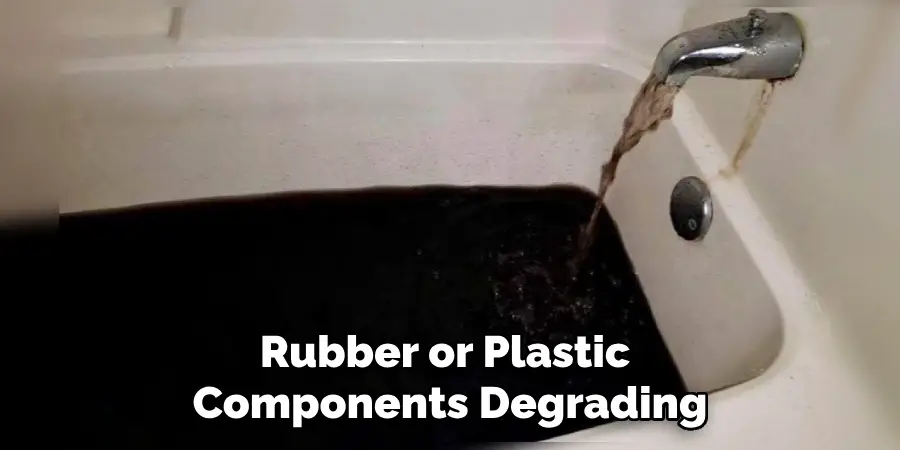
If homeowners observe these particles primarily from specific faucets, it may indicate a localized issue rather than a problem with the overall plumbing system. Addressing the degradation of these components quickly is crucial, as it can prevent further contamination and ensure clean, safe water usage throughout the home.
How to Fix Black Water Coming out Of Faucet: Immediate Steps to Take
Stop Using the Water
When black water appears, the first step is to turn off the affected faucet immediately and refrain from using water from it until the issue is addressed. This precaution helps prevent further contamination and reduces potential health risks associated with consuming or using discolored water. It’s vital to communicate to all household members to avoid using water from this source during this time.
Check Other Faucets
Next, check other faucets throughout the home to determine if the black water problem is isolated to one location or if it is affecting the entire water supply. Turn on faucets in different areas and observe the water quality. Identifying whether the issue is localized to a single tap or prevalent in multiple fixtures can help pinpoint the source of the problem more effectively, guiding further diagnostic steps and solutions.
How to Fix Black Water Coming out Of Faucet: Inspecting and Flushing the System
Flush the Water Lines
To resolve the black water issue, it is important to flush the water lines thoroughly. Start by running cold water from all faucets in the home for several minutes. This process allows any trapped sediment or particles accumulated in the plumbing to be flushed out. The goal is to clear any obstructions that may be causing the discoloration in the water.
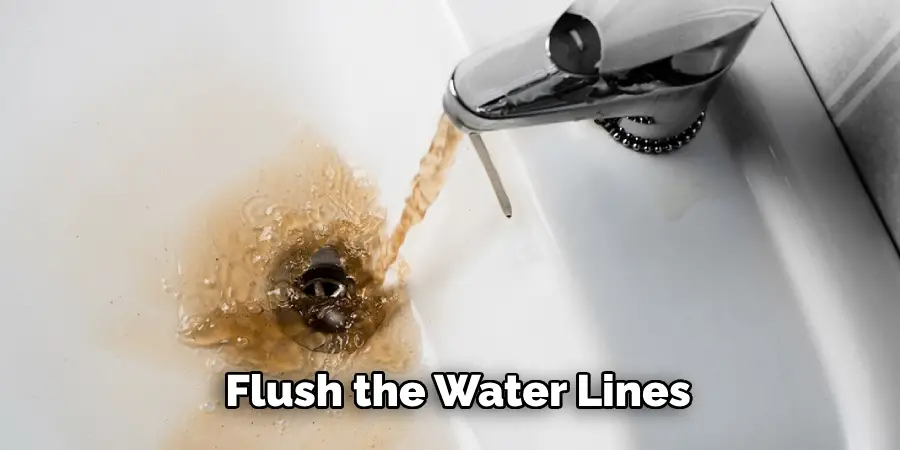
As you perform this step, monitor the water quality closely; watch for any changes in clarity and color during and after the flushing process. If the water begins to clear up, this may indicate that the black water was caused by temporary sediment buildup. However, further investigation will be necessary if the problem persists after flushing.
Inspect Faucet Components
After flushing the water lines, the next step is to inspect the components of the affected faucet. Begin by disassembling the faucet to access the aerator—this is the screen at the tip of the faucet where water flows out. Remove the aerator and check for any debris, sediment, or deteriorated parts contributing to the black water issue.
If you find significant buildup or damage, clean the aerator using vinegar or a gentle scrub brush to remove any contaminants. In cases where components like washers or O-rings appear worn or damaged, replacing them is essential to ensure proper function. Clean or replace these parts, as fixing localized issues in the faucet can greatly improve water quality throughout your home.
Check the Water Heater
Another potential source of black water can be the water heater itself. Over time, sediment and minerals can accumulate at the bottom of the tank, especially in areas with hard water. When hot water is drawn from the heater, this sediment can be stirred up and sent through the plumbing, resulting in black or discolored water.
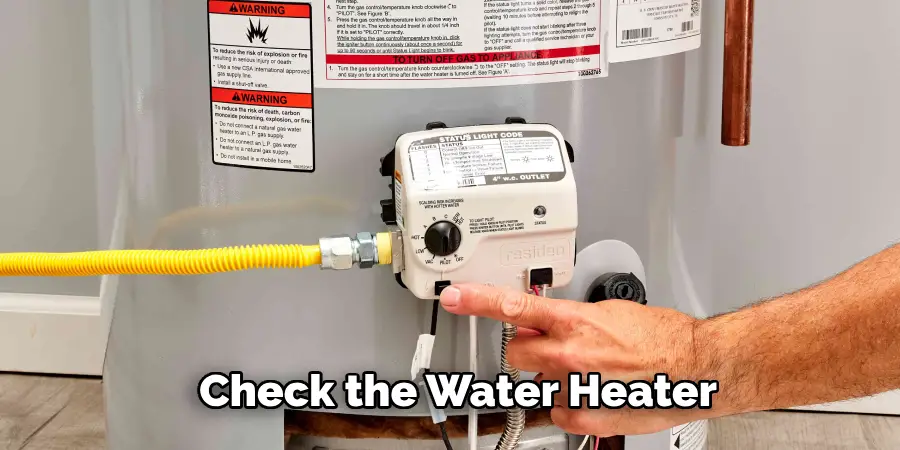
To mitigate this issue, it’s recommended to flush the water heater regularly to remove any sediment buildup—this involves turning off the heater and draining the tank through the drain valve following manufacturer instructions. Furthermore, check the anode rod within the heater, as this component is designed to prevent corrosion.
The anode rod can release particles into the water supply if it is significantly corroded. Inspecting and possibly replacing the anode rod can help maintain water quality and prolong the water heater’s life, preventing future occurrences of black water.
Long-Term Solutions
Replace Corroded Pipes
If corrosion is identified as the cause of black water, replacing old, corroded pipes is an essential long-term solution to prevent future issues. Materials such as copper or PEX are recommended due to their durability and resistance to corrosion.
Copper pipes have a long lifespan and offer excellent resistance to corrosion and bacteria, while PEX pipes are flexible, easy to install, and less likely to corrode over time. Homeowners should consult a professional plumber for a thorough inspection to determine the extent of the corrosion and to discuss replacement options.
Pipe replacement can be complex, involving digging and potentially shifting plumbing throughout the home, making professional assistance crucial in ensuring the work is done correctly and safely.
Install a Water Filtration System
In addition to replacing corroded pipes, installing a whole-house water filtration system can significantly enhance water quality and reduce the risk of black water. Such filtration systems are designed to remove sediment, minerals, and other contaminants that can accumulate in the water supply. Different types of filtration systems are available depending on specific water quality needs. Sediment filters effectively trap larger particles, while carbon filters can remove chlorine, volatile organic compounds, and unpleasant tastes and odors.
Reverse osmosis systems provide an advanced filtration method, effectively reducing dissolved solids and impurities from the water. When selecting a filtration system, homeowners should consider factors such as local water quality, the system’s maintenance requirements, and the volume of water needed for their household. Consulting with a water quality specialist can help ensure the best system is chosen and tailored to meet the home’s unique needs.

Preventive Measures
Regular Maintenance
Regular maintenance is essential to prevent blackwater issues. Flushing the water heater annually helps remove accumulated sediment, ensuring better water quality and efficient heating. Additionally, cleaning faucet aerators at least twice a year can prevent debris build-up, while routinely checking for signs of pipe corrosion can help identify problems before they escalate. Engaging in these maintenance practices ensures that the plumbing system operates smoothly and mitigates the water supply’s discoloration risk.
Water Quality Testing
Periodic water quality testing is a proactive approach for homeowners, particularly in areas with hard water or older plumbing systems. Testing can identify contaminants, pH levels, and mineral content, allowing homeowners to address potential issues early on. It is advisable to conduct testing every six months to a year, adjusting the frequency based on the specific water quality challenges in the area. Engaging a professional to perform testing can provide more comprehensive results and valuable insights for maintaining water quality.
When to Call a Professional
Persistent Problems
If the black water issue continues despite your efforts to flush the system and clean faucet components, it may signal a more significant underlying problem that necessitates expert intervention. In these situations, calling a professional plumber is advisable, as they possess the knowledge and tools to conduct a thorough assessment of the plumbing system. They can diagnose issues that may not be immediately evident to homeowners and determine the best course of action to restore water quality.
Complex Repairs
Consulting with a professional is crucial for more complicated repairs—such as replacing corroded pipes or servicing a water heater. These tasks can involve intricate systems or potentially hazardous conditions that require specialized training and expertise. Professionals ensure that such repairs are executed correctly and safely, minimizing the risk of further complications and ensuring the longevity of your plumbing infrastructure.
You Can Also Check Fix a Hard to Flush Toilet
Conclusion
In summary, addressing the issue of black water coming out of the faucet requires a multifaceted approach. Start by flushing the plumbing system and regularly inspecting components such as the water heater and pipes for signs of corrosion or sediment buildup. Consider long-term solutions, including replacing corroded pipes and installing a water filtration system to improve overall water quality.
It is crucial to address these problems promptly to prevent further damage and potential health risks associated with contaminated water. Remember, knowing how to fix black water coming out of faucet means taking proactive steps to ensure your plumbing system remains in optimal condition. With the appropriate measures, black water can be effectively resolved, and implementing routine maintenance will help safeguard against future occurrences, assuring a clean and safe water supply in your home.

